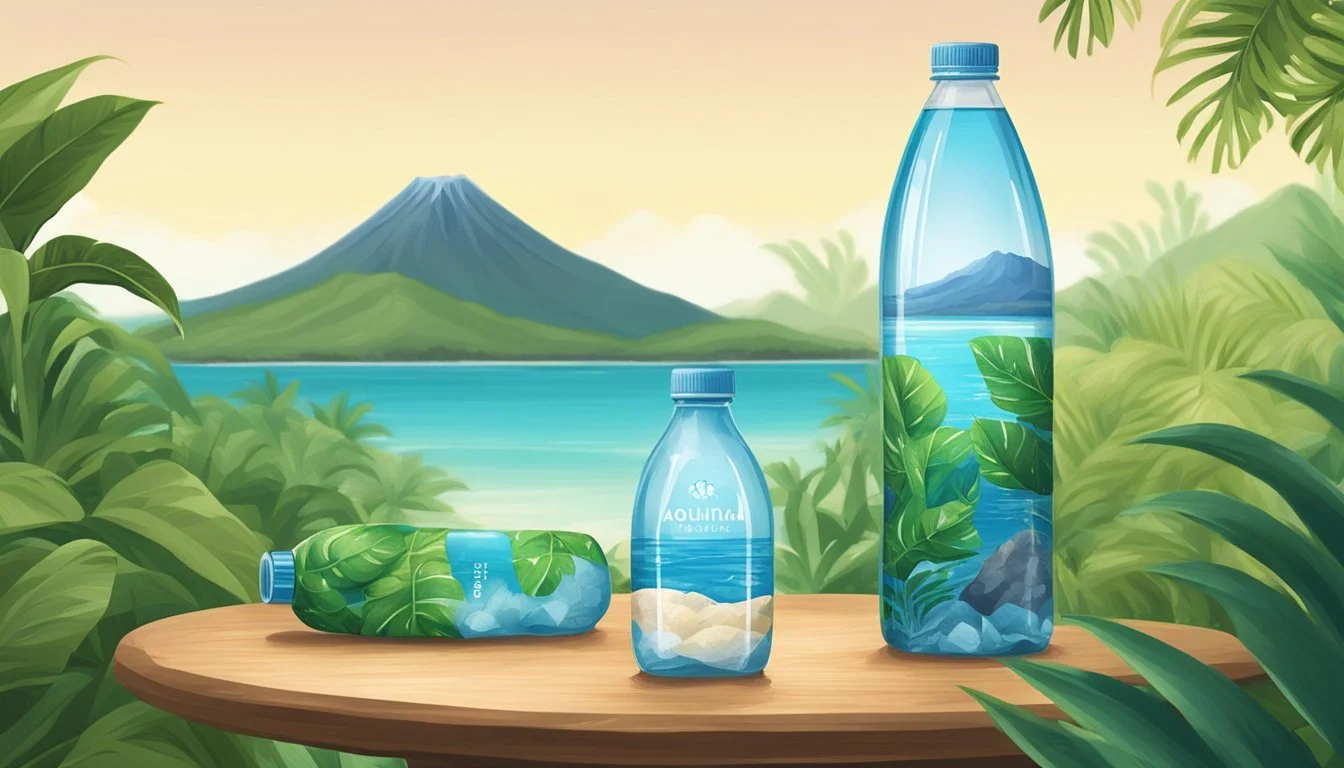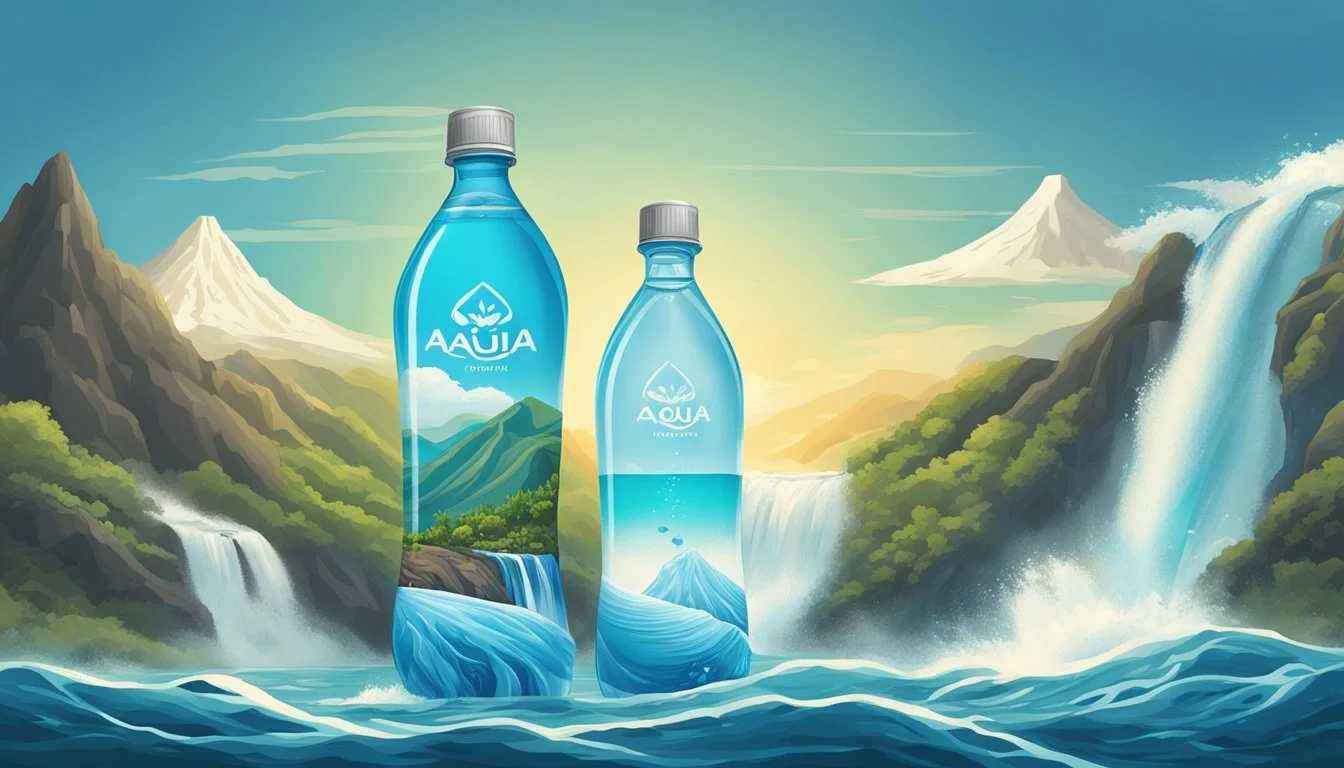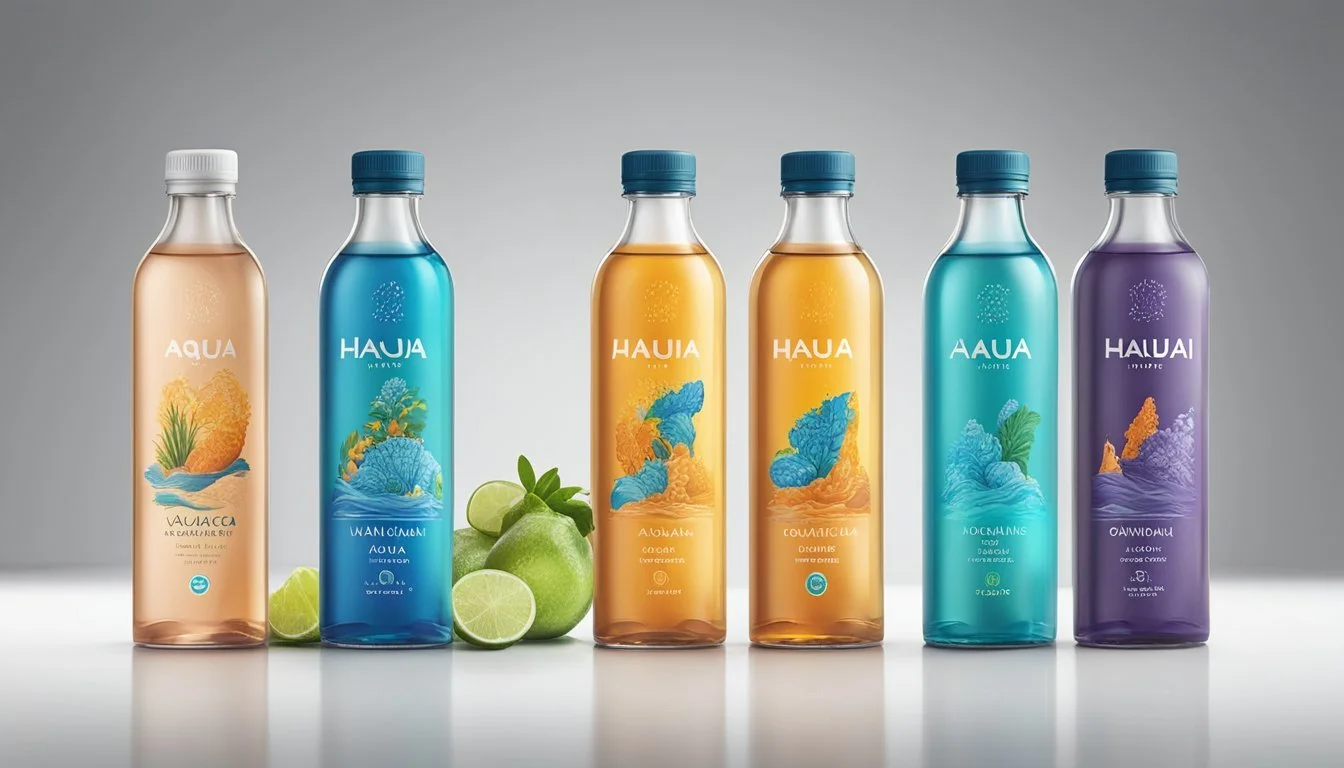Aqua Carpatica vs. Hawai’i Volcanic
Comparing Premium Bottled Waters
When it comes to choosing the best bottled water, comparisons like Aqua Carpatica vs. Hawai’i Volcanic offer a nuanced view of two unique products. Aqua Carpatica, known for its nitrate-free benefits, prides itself on purity and reasonable pricing. On the other hand, Hawai’i Volcanic water is celebrated for its naturally alkaline properties and luxurious taste from the volcanic rock filtration.
For those prioritizing health, Aqua Carpatica's nitrate-free claim stands out significantly. Meanwhile, those who appreciate a more subtle sweetness and a naturally high pH might find Hawai’i Volcanic more appealing. Both waters bring something unique to the table, making them formidable contenders in the bottled water market.
Ultimately, whether one prefers the pristine purity of Aqua Carpatica or the exotic allure of Hawai’i Volcanic, each option caters to different tastes and health considerations. Readers with specific preferences or health goals will find value in understanding the distinct characteristics of these premium bottled water brands.
Origins of Aqua Carpatica and Hawai’i Volcanic
Aqua Carpatica is sourced from the Carpathian Mountains in Romania, renowned for their ancient natural beauty and purity. Hawai’i Volcanic water, on the other hand, originates from the Mauna Loa Volcano, located on the Big Island of Hawaii, known for its volcanic activity and unique filtration process.
The Source of Aqua Carpatica
Aqua Carpatica is drawn from deep springs within the Carpathian Mountains. This region in Romania is celebrated for its untouched forests and pristine landscapes, providing an almost mythical origin for the water.
The springs are nitrate-free and naturally carbonated, emerging from a unique hydro-geological environment. The Carpathian Mountains are one of Europe's last stretches of wild forest, a fact that adds to the water's allure. The purity of the source is maintained by the ancient geological formations and the region's isolated location.
The Source of Hawai’i Volcanic
Hawai’i Volcanic water begins its journey on Mauna Loa, the world's largest volcano, located on Hawaii's Big Island. This water originates from the snowmelt and rain that filter through porous volcanic rock.
This unique filtration process enriches the water with minerals as it travels down to replenishing the Kea'au Aquifer. Since its establishment in 2012, Waiākea Hawaiian Volcanic Water has been prized for its natural health benefits and sustainability. The water is collected from a deep well, ensuring constant high quality and purity. The area is rich in volcanic activity, contributing to the water’s unique mineral profile.
Chemical Composition and Health Benefits
Aqua Carpatica and Hawai’i Volcanic water have unique chemical compositions and health benefits that make them attractive options for health-conscious consumers. This section will examine the mineral content, pH levels, and hydration benefits of each water.
Mineral Content Analysis
Aqua Carpatica is rich in natural minerals. It contains significant amounts of calcium, magnesium, and potassium. These minerals contribute to bone health and muscular function. The water is particularly low in sodium, making it a suitable choice for those managing blood pressure.
Hawai’i Volcanic water also offers a robust profile of minerals, including silica, calcium, and magnesium. The presence of silica is especially beneficial, as it supports skin, hair, nail, and bone health. The minerals are naturally filtered through volcanic rock, ensuring a clean and rich mineral composition.
pH Levels and Alkalinity
Aqua Carpatica has a balanced pH level, usually around 7.4-8. This alkalinity is beneficial for neutralizing acid in the body, which can promote better digestion and reduce acid reflux.
Hawai’i Volcanic water is slightly alkaline, with a pH level ranging from 7.6 to 8.2. This makes it a good choice for those seeking to balance the body's pH. The alkalinity can help mitigate acid buildup and support metabolic health.
Hydration and Health Implications
Aqua Carpatica hydrates effectively due to its mineral content. The electrolytes help maintain fluid balance, which is essential for muscle function, nerve transmission, and overall hydration. It's a promising option for athletes or individuals with active lifestyles.
Hawai’i Volcanic water also aids in hydration, thanks to its high mineral content. The electrolytes present support optimal hydration levels, which can improve physical performance and cognitive function. The presence of silica can also enhance hydration and contribute to overall well-being by supporting collagen production.
Both Aqua Carpatica and Hawai’i Volcanic water provide substantial health benefits, but their unique mineral compositions and pH levels cater to different needs.
Environmental Impact and Sustainability
The environmental impact and sustainability of bottled water brands are crucial factors for consumers and the planet. This section evaluates packaging materials and their friendliness to the environment, as well as the sustainability initiatives and community support undertaken by Aqua Carpatica and Hawai’i Volcanic.
Packaging and Environmental Friendliness
Aqua Carpatica uses RPET and recyclable materials for their packaging, focusing on minimizing environmental impact. Their bottles are specially designed to be lightweight, reducing transportation emissions.
Hawai’i Volcanic emphasizes the use of eco-friendly materials, including RPET and aluminum. They pride themselves on reusable and recyclable bottles, aligning with their commitment to sustainability. Using aluminum can be environmentally advantageous due to its high recyclability rate. Both brands aim to provide still water in sustainable packaging, reflecting their conscious effort to protect the environment.
Sustainability Initiatives and Community Support
Aqua Carpatica engages in several initiatives aimed at conservation and sustainability. They collaborate with various organizations to provide clean water solutions in regions lacking access. Their efforts contribute significantly to water conservation and support for communities in need.
Hawai’i Volcanic focuses on giving back through the Kōkua Initiative, which supports local conservation efforts and educational opportunities. They partner with organizations like Pump Aid to improve access to clean water in Africa. This commitment includes supporting forest preserves and other environmental efforts, often promoted in Whole Foods Market and other retailers. They target not only environmental sustainability but also enriching local and global communities through various initiatives.
Taste and Consumer Experience
Both Aqua Carpatica and Hawai’i Volcanic promise unique flavor profiles and consumer experiences, balancing natural purity with distinct taste characteristics that appeal to different preferences.
Flavor Profile Comparison
Aqua Carpatica is renowned for its clean, crisp taste with a natural balance free from nitrates. It delivers a pure flavor, making it a preferred choice for those who enjoy a mineral-free palate. The water’s neutral pH balance ensures a fresh and untainted drinking experience, which can feel closer to high-quality tap water in its most refined form.
Hawai’i Volcanic, on the other hand, offers water filtered through volcanic rocks. This process imparts a slight but distinct mineral taste and a soft mouthfeel. The natural filtering not only enhances the water's purity but also results in a slightly alkaline pH, adding to the smoothness and overall drinking experience.
Consumer Reviews and Preferences
Consumers often express a strong preference for Aqua Carpatica’s natural taste and the reassurance of its nitrate-free and low-sodium content. Reviews highlight its refreshing flavor and the satisfaction of drinking naturally pure water. Many also appreciate its balanced taste which doesn’t leave any aftertaste.
Hawai’i Volcanic tends to attract those who prefer water with a bit more character. The subtle mineral notes from volcanic filtration and its slightly alkaline nature receive praise for offering a taste that stands distinct from more neutral waters. Customers appreciate the ‘rain-like’ freshness and the slight hint of minerals that set it apart from standard still waters.
Both waters have carved out loyal consumer bases by delivering unique and sought-after taste experiences, balancing purity with distinctive flavor characteristics.
Filtration Processes and Purity
Both Aqua Carpatica and Hawai’i Volcanic employ distinct filtration methods, contributing to their respective purity and health benefits. Understanding these filtration processes highlights why each brand claims superior quality.
Natural Filtration of Hawai’i Volcanic
Hawaiian Volcanic Water, specifically from Hawai’i Volcanic, undergoes natural filtration through layers of porous lava rock. This process involves volcanic filtration, where water filters down from the Mauna Loa volcano.
The natural journey through lava rock enriches the water with minerals and electrolytes, while removing harmful contaminants. The volcanic filtration method ensures the water maintains an alkaline pH between 7.6 to 8.5, providing both taste and health benefits.
The water's purity stems from the deep well sources located at the base of the volcano, which are protected from surface contaminants. This natural filtration method is key to delivering clean, fresh, and nutrient-rich water.
Filtration and Purity of Aqua Carpatica
Aqua Carpatica sources its water from protected artesian wells in the Carpathian Mountains. The artesian water undergoes minimal filtration since it is naturally pure.
This area, known for its untouched environment, lacks industrial pollutants, ensuring the water is free from harmful contaminants. The natural shielding provided by the mountains allows for water with low nitrate levels.
Aqua Carpatica prides itself on its water’s high mineral content, which includes naturally occurring electrolytes that contribute to hydration. Minimal human intervention in its filtration process highlights the pristine nature of this water.
These pure, naturally filtered sources underscore Aqua Carpatica's commitment to delivering high-quality bottled water.
Market Presence and Accessibility
When comparing Aqua Carpatica and Hawai’i Volcanic, market presence and accessibility are critical factors. These aspects encompass global distribution, retail availability, and cost considerations.
Global Distribution and Retail
Aqua Carpatica boasts a strong presence particularly in Europe, leveraging its Romanian origins to capture a substantial market share in various countries. Available in major grocery chains and specialty stores, it is also found in high-end restaurants, emphasizing its premium image.
Hawai’i Volcanic, sourced from volcanic springs, primarily dominates the Hawaiian market but is gradually expanding into mainland U.S. This brand is marketed in health-focused stores such as Whole Foods Market. While its reach is still growing compared to Aqua Carpatica, its unique volcanic origin and alkaline properties attract health-conscious consumers.
Affordability and Cost Comparison
Price plays a significant role in consumer preference. Aqua Carpatica is positioned as a premium brand, reflecting its high-quality spring water with minimal TDS (Total Dissolved Solids) and absence of nitrates. Consequently, it is usually priced higher than standard bottled water brands.
Hawai’i Volcanic, despite its superior alkalinity and unique volcanic origin, remains competitively priced. It offers a balance between health benefits and cost, targeting both mainstream consumers and those willing to spend slightly more for volcanic spring water advantages.
Comparatively, Hawai’i Volcanic might be more accessible to a wider range of consumers due to its relatively affordable pricing, despite its niche market positioning.





